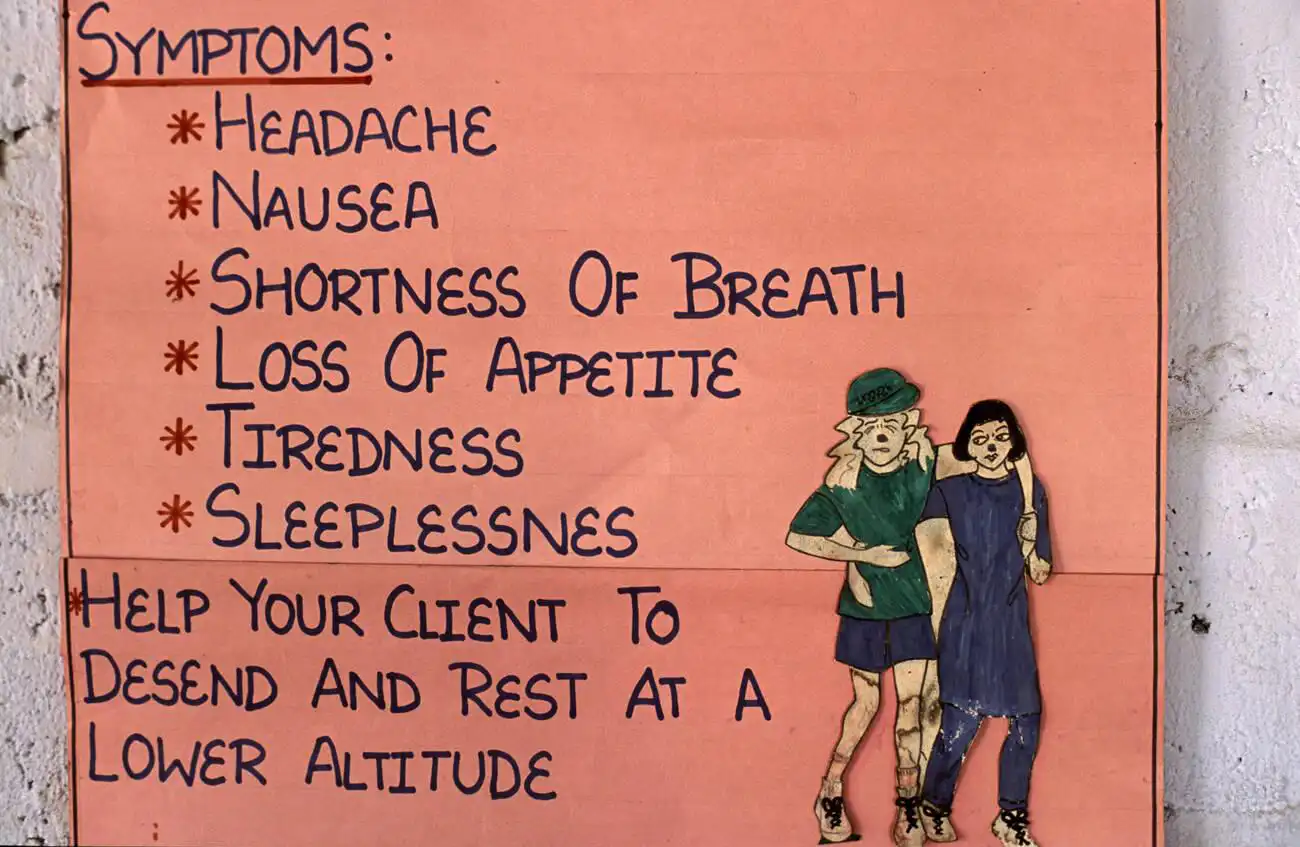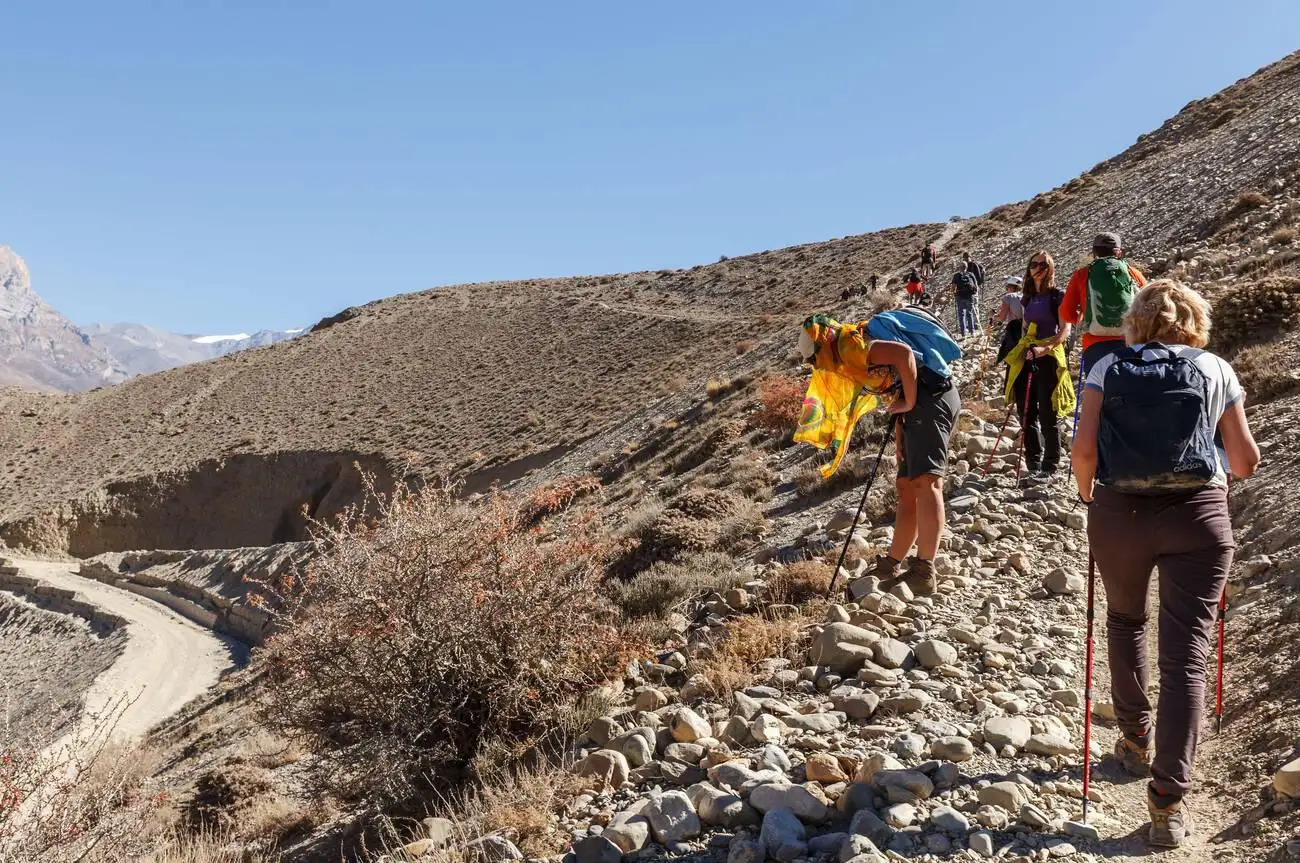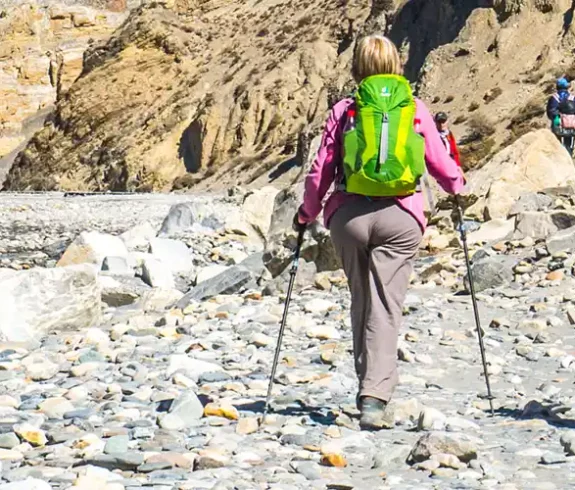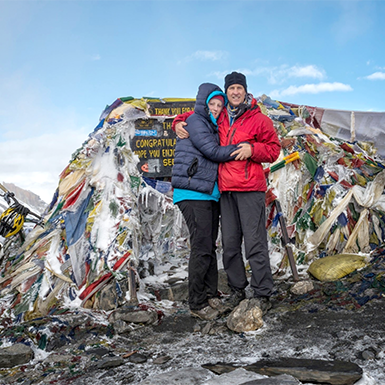Last year, 21 tourists who went to Mustang and Manang beyond the Himalayas for trekking and pilgrimage passed away. Among them, 11 were Indians, 6 Nepalese, 2 Malaysians, 1 Ukrainian, and 1 British citizen who died due to altitude sickness during their journey. Most of the altitude sickness incidents occurred in the Muktinath area of Mustang.
According to the District Police Office Mustang, six people died from altitude sickness in the fiscal year 2078/79, while 12 people died from altitude sickness in the fiscal year 2079/80.
According to Police Inspector Bishal Adhikari from the District Police Office, Mustang, 14 people lost their lives due to altitude sickness in the last fiscal year. Most of those who died were Indian pilgrims visiting the famous religious site of Muktinath.

Police Inspector Adhikari reported that 10 of the 14 deaths were Indian, 3 were Nepali, and one was Ukrainian. “The number of deaths due to altitude sickness in Mustang seems to be increasing every year,” he said, adding, “Recently, an emergency room has been set up in Muktinath to provide initial treatment and rescue for tourists affected by altitude sickness.”
Tourist guide Dibas Gurung explained that Indian tourists often experience altitude sickness when they reach Muktinath by vehicle all at once. “When traveling in mountainous regions, taking breaks and gradually ascending to higher altitudes is important. Sudden transitions from low to high altitudes can lead to altitude sickness,” he said. “This problem is widespread among tourists visiting Muktinath in Mustang and Tilicho Lake in Manang.”
Gurung also noted that Nepalese tourists from the Kathmandu Valley and the Terai regions who travel to Tilicho Lake often suffer from altitude sickness. “Those who trek and take breaks along the way have a lower risk of altitude sickness, but those who ascend rapidly by car or motorcycle face greater challenges,” he added.
Muktinath – an altitude of 3710m above sea level, while Tilicho Lake is at an altitude of 4,919 meters. According to Gurung, the best way to avoid altitude sickness is to adapt to the local environment and take breaks during the journey. He advised trekkers not to ascend more than 500 meters in altitude in a single day.
Gurung emphasized that trekking should be undertaken with good physical and mental health and fitness. He also advised against solo trekking, especially when the destination is new or distant.
“Trekking with a guide makes the journey much easier,” he said, adding, “If the government’s policy of requiring guides for trekking is effectively implemented, it can reduce the risks.”
According to him, trekking destinations in Nepal’s Himalayan region require ascents up to nearly 6,000 meters in altitude.

Gurung emphasized that trekkers should carry essential first-aid medicines and supplies. Since some people begin to show symptoms of altitude sickness at around 3,000 meters, he advised taking breaks and not covering too much distance in a single day.
Dr. Raviranjan Pradhan, the chief physician at Dhaulagiri Hospital, explained that altitude sickness can lead to a decrease in the body’s oxygen level, which can be fatal. “Altitude sickness causes a lack of oxygen in the body, leading to fluid accumulation in the brain and lungs, which can result in death,” he said. If symptoms appear, one should immediately stop the trek and descend to a lower altitude to avoid altitude sickness.”
Dr. Pradhan further explained that symptoms of altitude sickness include a heavy head, nausea, and vomiting. “Some medications can help prevent altitude sickness, but even with mild symptoms, it’s crucial to descend. If caution is not exercised, the condition can become severe, and if timely rescue and treatment are not available, it can be fatal,” he warned.
He also noted that foreign tourists, including Indians, often suffer fatal altitude sickness when they suddenly ascend to high Himalayan regions like Muktinath without proper acclimatization. “It is advisable to rest in Jomsom for a day before heading to Muktinath,” he suggested. “Special attention should be paid to health when traveling in high-altitude areas.”
Alarming Increase in Altitude Sickness Deaths
Dr. Ravin Kadelia, the head of the Annapurna Conservation Area Project (ACAP), mentioned that tourists affected by altitude sickness have been rescued by helicopter. He noted that the project office has started keeping records of altitude sickness incidents since last year.
“When starting on long-distance treks, one should not go alone; it’s important to travel in a group or with a guide,” Dr. Kadelia advised. “It is preferable to trek through a trekking agency.” He also informed that during treks in the Annapurna Conservation Area in the last fiscal year, three foreign tourists died from falls.
He reported that a Swedish tourist died in Kaski, a German tourist died in this area, and an American tourist died in Manang. Regarding the Swedish citizen who went missing during the Mardi Himal trek, he mentioned that the human remains were found in July, seven months after the incident.
Foreign trekkers have lost their lives not only due to altitude sickness but also from other incidents. In October, 69-year-old American citizen Charles Keith Davis died after falling off a cliff in Khotro, located in Nasong Rural Municipality-3 of Manang, along the Dumre-Besisahar-Chame road. Similarly, last year, British citizen Terence Brady was found dead in his sleep at the Jambala Guest House and Restaurant in Meta, located in Narpa Bhumi Rural Municipality-2, as reported by ACAP (Annapurna Conservation Area Project).
In another incident, 35-year-old Indian tourist Mohamad Rizim died from altitude sickness at Todanda in Ngisyang Rural Municipality-9 along the Manang-Khangsar-Tilicho trekking route. Additionally, 35-year-old Hari Adhikari from Phulkharka in Ganga Jamuna Rural Municipality-5, Dhading, also died from altitude sickness in Ngisyang-6 of Manang. According to ACAP records, Ram Dangi from Ghorahi Sub-metropolitan City-9, Dang, died while en route to Tilicho Base Camp.
The chief of the ACAP Area Conservation Office in Manang, Dhab Bahadur Bhujel, mentioned that both tourists and guides have lost their lives due to negligence regarding the environmental and weather risks in Manang. He stated, “Given the complex terrain of Manang, trekking without a guide is risky. It’s important to plan the trip to Manang by considering the weather conditions.”
He explained that most trekkers enter Manang through Tilicho Lake and cross Thorong La Pass before heading to Muktinath in Mustang. He emphasized that crossing Tilicho Lake, situated at nearly 5,000 meters, and Thorong La Pass, at an altitude of 5,416 meters, is challenging for everyone.
Vinod Gurung, president of the Tourism Entrepreneurs Association Manang, noted that some tourists need help considering the Himalayan region’s weather conditions. He stressed that tourists and related organizations should be aware of the health issues when traveling from low-pressure areas to higher altitudes.
“By paying attention to the weather and gradually acclimatizing to the local environment, the risk of altitude sickness can be minimized,” said President Gurung.
The Annapurna Conservation Area is 7,600 square kilometers and includes 89 wards in 16 local units across Kaski, Lamjung, Manang, Myagdi, and Mustang. Due to its natural beauty, biodiversity, Himalayan lifestyle, civilization, and culture, the area is a popular destination for both domestic and international tourists.
In the last fiscal year, 222,180 foreign tourists visited the Annapurna region. Among them, 117,845 were from Asian countries, while 104,256 were from other countries.
According to the project office, the most tourists visited the region in Chaitra (March-April) with 35,265 visitors, while the lowest was in Shrawan (July-August) with just 5,401 visitors.
Project Chief Dr. Kadelia mentioned that around 50,000 more tourists visited the area in the last fiscal year compared to the previous year, 2079/80.
That year, 172,510 tourists visited the Annapurna region, including 89,777 from South Asian countries and 82,733 from other countries.


